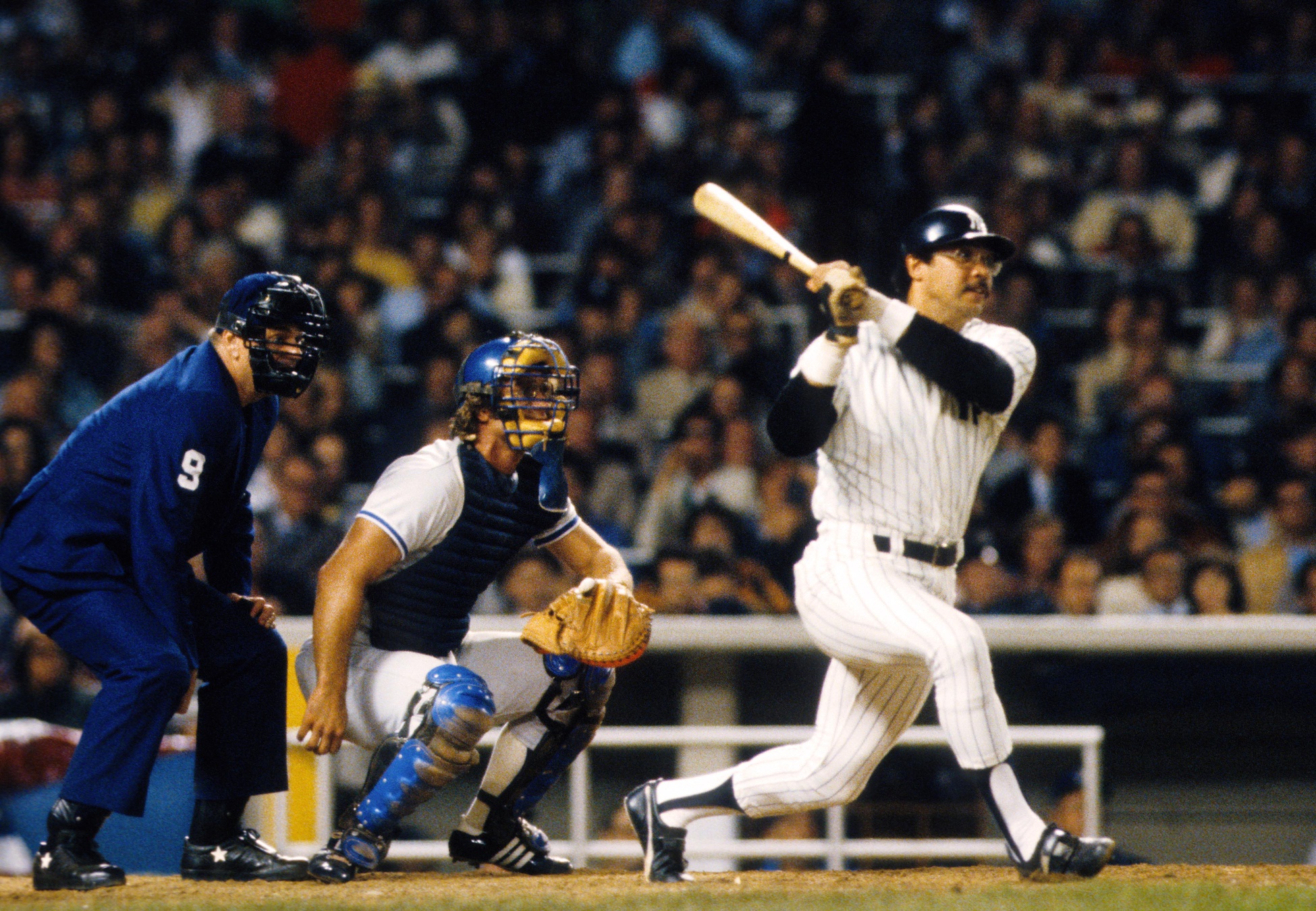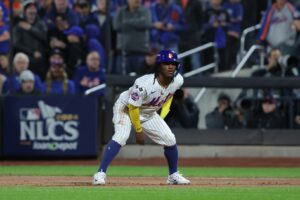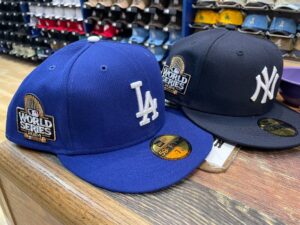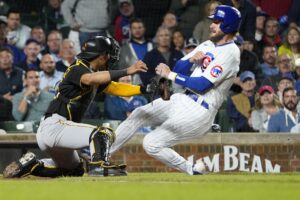The rivalry between the Los Angeles Dodgers and New York Yankees is baseball royalty, with a storied history spanning generations. Since their first World Series meeting in 1941, these iconic terms have clashed in some of the sport’s most unforgettable moments. Relive the magic of their legendary Fall Classic showdowns, featuring Hall of Famers, record-breaking performances and dramatic twists that have shaped baseball history. Explore the top moments that continue to captivate fans and inspire new generations.
The Most Iconic Dodgers-Yankees World Series Moments
1941 World Series: Mickey Owen Drops Third Strike
The Yankees were back in the World Series after a surprising absence in 1940. They were led by Joe DiMaggio, who achieved a remarkable hitting streak in 56 consecutive games during the regular season. The Dodgers, meanwhile, reached the postseason for the first time since 1920. Game 4 of the series was particularly significant, as it could have evened the series for the Dodgers until they didn’t.
In a pivotal moment, reliever Hugh Casey struck out Tommy Henrich with two outs in the ninth inning. However, the ball eluded catcher Mickey Owen, who was charged with a passed ball, allowing Henrich to scramble to first base. This mistake set the stage for the Yankees, who capitalized on the extended inning by scoring four runs to secure the victory. They went on to wrap up the World Series the following day.
1955 World Series: Sandy Amorós’ Doube Play
The Dodgers franchise began in 1884 and did not win a World Series until 1955. That year looked promising, as the Dodgers were leading Game 7 against the Yankees 2-0. With a slim lead, Dodgers manager Walter Alston brought in Sandy Amorós to play left field in the bottom of the sixth inning. This move shifted Jim Gilliam from left to second base and removed Don Zimmer from the game.
Despite the runners being on first and second, the decision proved crucial for the Dodgers’ title hopes. Yogi Berra stepped up to bat with no outs and hit a line drive down the left field line. However, Amorós made a spectacular running catch in the left field corner, robbing Berra of extra bases. He then doubled off Gil McDougald to maintain the lead.
With the Dodgers winning the Series, they captured their first championship in franchise history. It would be the only Series the Dodgers won while based in Brooklyn.
1956 World Series: Don Larsen’s Perfection
The Yankees and Dodgers met again in the 1956 World Series, during which Don Larsen etched his name in baseball history by pitching the first perfect game in postseason history. Larsen delivered a 97-pitch masterpiece, facing only one three-ball count and effortlessly navigating a Dodgers lineup that included five future Hall of Famers. This marked the only no-hitter in World Series history until the Houston Astros pitching staff achieved a combined no-hitter against the Philadelphia Phillies in the 2022 World Series.
This Series was the last Subway Series in the Fall Classic until 2000, as the Dodgers and New York Giants moved to California the following season.
1963 World Series: Dodgers Dominant Pitching
In a historic showdown, the Dodgers’ legendary pitching staff, featuring Sandy Koufax, Don Drysdale, Johnny Podres, and reliever Ron Perranoski, executed a masterful performance, allowing a mere four runs throughout four games. The Yankees, struggling mightily at the plate, recorded a dismal team batting average of .171, marking the lowest postseason average in the franchise’s storied history. Koufax dazzled spectators with an exceptional display in Game 1, setting a World Series record with 15 strikeouts—a record that would stand for only five years until Bob Gibson surpassed it.
Showcasing his dominance, Koufax triumphed over the renowned Whitey Ford not once, but twice, delivering two complete-game performances. This Series also etched its name in history as the first time the Yankees were swept in a World Series.
Additionally, this championship represented the inaugural meeting between teams from New York City and Los Angeles in a major professional sports championship, underscoring the significance of this monumental clash.
1977 World Series: Reggie Jackson’s Three-Homer Game
In a spectacular display of talent and power, Reggie Jackson earned the nickname “Mr. October” during a memorable Game 6, sealing the Yankees’ first championship in 15 long years. The setting was electric in New York, where the Dodgers held a precarious 3-2 advantage after three innings. Jackson unleashed his fierce prowess. He began his night with a two-run home run off Burt Hooton. Just an inning later, he struck again, this time launching a two-run blast off Elias Sosa, further igniting the fervor of the fans.
The 14-time All-Star capped off his unforgettable night with a powerful solo homer off Charlie Hough in the eighth inning, solidifying the Yankees’ lead and propelling them to a triumphant, Series-clinching victory. His extraordinary performance was a breathtaking chapter in baseball history.
1978 World Series: Graig Nettles Defensive Efforts in Game 3
The 1978 World Series was the first of ten consecutive years that saw ten different teams in the Fall Classic. It was the first rematch since the Yankees and Braves squared off in 1957-58.
With the Yankees trailing 2-0 in the series and desperate for a win, Ron Guidry rose to the challenge, delivering a masterful performance that secured a much-needed victory. Guidry pitched a complete game, and while he faced a tough lineup, surrendering eight hits and seven walks, he managed to strike out four batters along the way. The real hero of the night, however, was third baseman Graig Nettles, whose incredible defensive skills were nothing short of breathtaking. Nettles made several crucial plays, expertly fielding difficult grounders and making pinpoint throws, saving the Yankees from at least four runs. His dynamic presence in the infield energized the team and ultimately led to their first win after two tough losses at Dodger Stadium, rekindling hope for the series.
Lou Pinella evened the Series with a walk-off hit in Game 4 while Thurman Munson‘s five-RBI performance in Game 5 pulled New York ahead. Game 6 saw the Yankees make it four straight games and two straight Series.
1981 World Series: “Fernandomania” Turns the Tide
When Fernando Valenzuela took the mound in Game 3 of the 1981 World Series, the Yankees had a commanding 2-0 lead over the Dodgers. There was a real possibility of the Dodgers losing a third World Series loss in five years to their East Coast rivals. Instead, the Dodgers won the game 5-4, largely due to the performance of their rookie left-hander. Valenzuela gave up nine hits and seven walks in a 146-pitch complete-game, spurring the Dodgers to a World Series victory and cementing his “Fernandomania” legend in Los Angeles.
This was the last meeting between teams from New York and Los Angeles for a major professional sports championship until the Los Angeles Kings and New York Rangers reached the 2014 Stanley Cup Finals.
Main Photo: Dick Raphael-USA TODAY Sports






